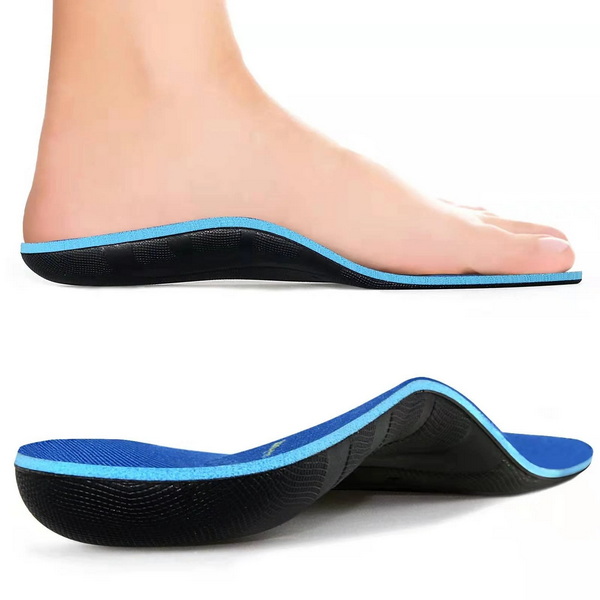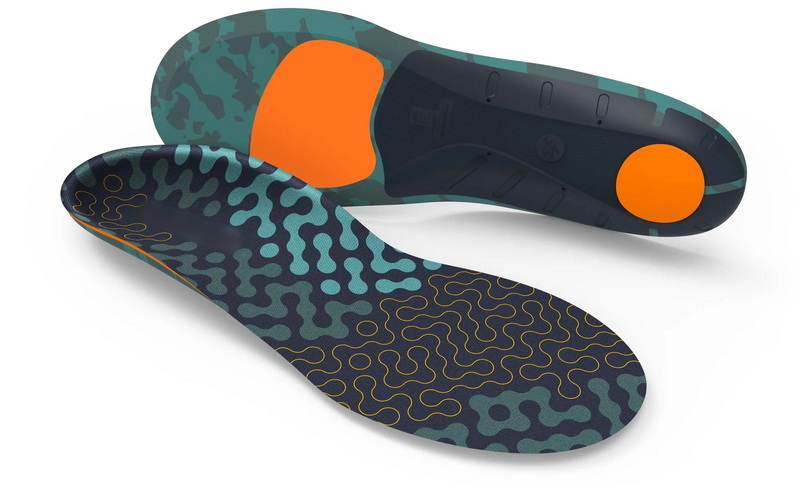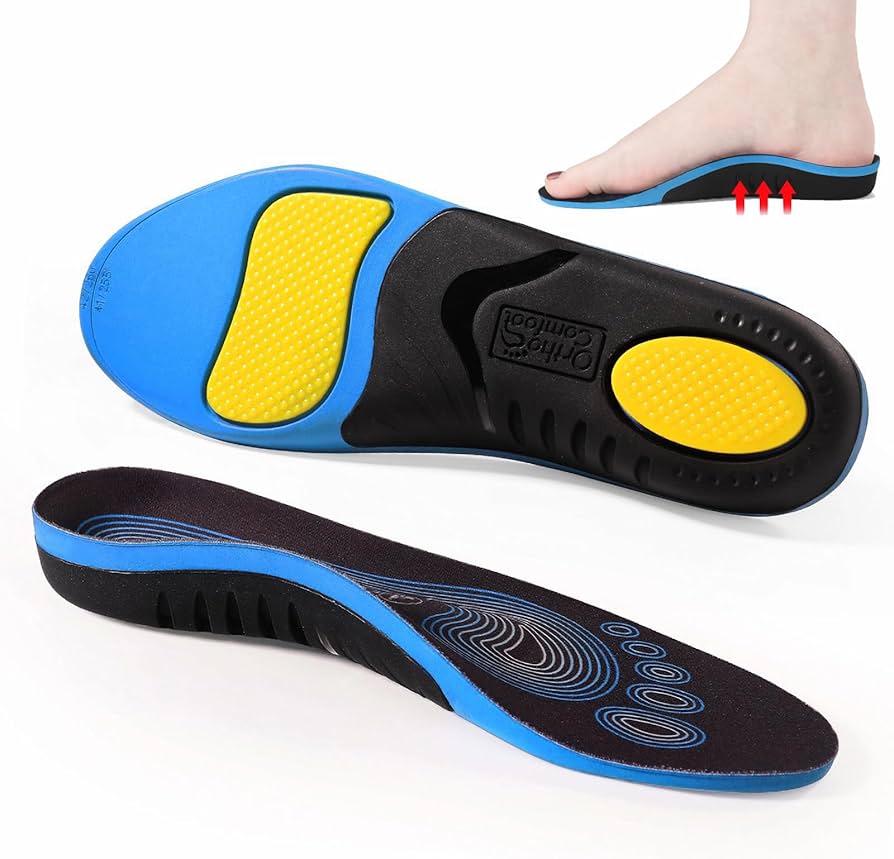Views: 222 Author: Edvo Publish Time: 2025-10-23 Origin: Site











Content Menu
● Understanding the Normal Foot Arch
● What Are Arch Insoles and How Do They Work?
● Benefits of Using Arch Insoles for Normal Feet
>> Added Comfort and Cushioning
>> Improved Balance and Stability
● Possible Drawbacks of Using Arch Insoles on Normal Arches
>> Over-Support and Muscle Weakness
>> Changes in Gait and Alignment
>> Discomfort and Pressure Points
>> Overheating and Sweat Accumulation
● How to Choose the Right Arch Insoles for Normal Arches
>> Professional Foot Assessment
● Strengthening and Maintenance Without Reliance
>> Exercise Routine for Foot Strength
>> Choosing the Right Footwear
>> Replace Insoles Periodically
● Recognizing Warning Signs of Harmful Insoles
>> Balance or Postural Changes
● When Arch Insoles Are Actually Necessary
● Lifestyle Adjustments for Natural Support
● FAQ
>> 1. Can someone with normal arches wear arch insoles for running?
>> 2. How long does it take to adapt to new arch insoles?
>> 3. Can I strengthen my feet while still using arch insoles?
>> 4. Are memory foam insoles suitable for everyday wear?
>> 5. Should I remove my shoe's original insoles before inserting new arch insoles?
Arch support insoles have become a common accessory for individuals seeking improved foot comfort, better posture, and relief from various foot-related conditions. However, people with normal foot arches often wonder whether these devices might do more harm than good. While arch insoles can provide useful support in specific situations, using them improperly may negatively affect natural foot biomechanics. This detailed guide explores how arch insoles interact with normal arches, weighing their potential benefits, risks, and guidelines for safe use.

A normal foot arch, also called a neutral arch, is the ideal balance between flexibility and stability. In this condition, the foot supports the body's weight efficiently while maintaining its natural structure and alignment. The primary component of the arch is the medial longitudinal arch, which extends from the heel to the ball of the foot.
People with a normal arch typically distribute pressure evenly across the foot when walking, running, or standing. The arch height allows for a proper combination of cushioning and support, which minimizes stress on the ankle and knee joints. The arch acts as a natural spring, absorbing impact and providing propulsion during movement.
However, even individuals with normal arches are not immune to fatigue, discomfort, or age-related weakness. Over time, habitual overuse, weight gain, and footwear choices can strain the ligaments and tendons supporting the arch, potentially leading to pain or structural changes.
Arch insoles, or orthotic inserts, are removable components placed inside footwear to provide additional cushioning and arch support. They are made from materials such as foam, gel, silicone, EVA, cork, or carbon fiber composites. Some are custom-designed based on precise foot measurements, while others are mass-produced for general use.
These insoles work by redistributing pressure across the foot, preventing overpronation (excessive inward rolling) or supination (excessive outward rolling). For people with flat feet or overly high arches, they help restore a balanced gait and reduce joint stress.
For those with normal arches, insoles are often marketed for comfort enhancement rather than correction. However, not all insoles are created equal. A poorly designed or overly rigid insole can interfere with the foot's natural motion, potentially leading to unintended complications.
People with normal arches can experience fatigue or soreness after extended standing or walking. Soft arch insoles made with foam or gel materials can improve comfort by adding an extra cushioning layer that reduces impact stress on the heels, balls of the feet, and arches.
This benefit is particularly helpful for professionals who spend hours on their feet, such as healthcare workers, retail employees, and athletes. In these cases, insoles function not as corrective devices but as comfort enhancers.
Normal arches naturally absorb shock during walking or running. However, when individuals are exposed to repeated high-impact activities – such as jogging on concrete or engaging in intense sports – additional cushioning can be beneficial. Quality arch insoles distribute forces more evenly through the foot and lower limb, reducing the risk of strain and microtrauma.
Over time, consistent absorption of high-impact forces can lead to fatigue in foot muscles and soft tissue. The additional cushion provided by insoles may serve as an extra buffer, making prolonged activities more comfortable and sustainable.
As people age, the fat padding on the soles thins out, and the connective tissues lose elasticity. Even with originally normal arches, aging can lead to mild flattening or discomfort. Using supportive yet flexible insoles may help slow down age-related flattening and maintain overall foot function by reducing direct impact on the joints and plantar fascia.
For individuals engaging in sports or occupational activities requiring precise balance, arch insoles can help stabilize the foot. This improved stability comes from the enhanced contact between the insole surface and the arch, reducing micro-movements that might contribute to joint fatigue or instability.
However, the key factor remains moderation—too much rigidity can reduce responsiveness, leading to slower adaptation during movement.
While providing support can feel comfortable, continual reliance on external assistance can weaken the intrinsic muscles of the foot. The body's natural arch-supporting mechanisms may become less engaged over time, similar to how constant use of a brace can weaken surrounding muscles.
When arch muscles lose strength, the natural arch stability declines, potentially increasing the risk of flattening or other posture-related issues. This can lead to dependency—where the foot relies on the insole for basic support even during low-impact activities.
Every component of your musculoskeletal chain is interconnected. When insoles change your foot's posture, it can affect your ankles, knees, hips, and even spine alignment. Excessive arch lift or improper contouring can alter your gait, leading to new pain sources such as knee strain or hip misalignment.
In some individuals, this might manifest as tension in the lower back or an uneven distribution of body weight, as the insoles subtly change the natural way your feet contact the ground.
A common problem arises when people choose insoles that do not match their actual arch height. If the insole's support area is too high, it may press uncomfortably against the plantar fascia, leading to irritation or inflammation. Conversely, inadequate support can cause localized stress under the heel or toes.
Individuals with normal arches should avoid rigid orthotic types designed for high or flat arches. Instead, softer, flexible materials should be used to maintain comfort without structural distortion.
Some insoles, especially those made from dense foam or rubber materials, can trap heat and moisture inside the shoes. Prolonged moisture can increase the risk of bacterial growth and bad odor. People who wear insoles should ensure that their footwear allows proper ventilation or choose insoles with breathable and antimicrobial linings.

If you have normal feet but are considering adding arch insoles, a podiatric assessment is recommended. A professional gait analysis can identify your foot's load distribution and determine if insoles are necessary. Some podiatrists use 3D scans to create custom inserts that gently support the foot without restricting its natural motion.
Opt for insoles made from foam, memory foam, or gel that compresses naturally under pressure. Avoid hard orthotics unless prescribed. Materials that mold to your foot's contour without forcing it into a specific position generally provide the safest support for normal arches.
A good insole should balance cushioning along the entire sole. Check for sufficient heel padding to reduce heel strike impact and forefoot flexibility to allow smooth toe-off. Excessive heel lift or stiffness in the ball area may compromise comfort and gait fluidity.
Even the best-designed insole can become counterproductive if it does not fit your shoe properly. The insole should lie flat with no curls or gaps, and your foot should not feel cramped. Overcrowding inside shoes can alter natural stride mechanics, causing unnecessary friction and discomfort.
Wear new insoles for short periods during the first week to let your body adjust gradually. Start with one to two hours per day, increasing the duration until you can wear them comfortably for a full day. Sudden changes can strain muscles and cause temporary soreness.
Avoid becoming dependent on insoles. Alternate between insole-supported shoes and natural footwear, allowing foot muscles to flex and strengthen. Walking barefoot on soft surfaces like grass or sand can help maintain natural strength and balance.
Pay attention to any discomfort or posture changes after introducing insoles. Pain in the knees, hips, or lower back can signal misalignment caused by excessive support. If pain persists, discontinue use and consult a podiatrist.
- Toe curls: Pick up small objects like marbles using your toes to engage the arch muscles.
- Heel raises: Stand on toes and slowly lower heels to strengthen the calf and intrinsic foot muscles.
- Foot massages: Stimulate circulation and relieve tension by massaging the soles daily.
- Barefoot walking: Practice walking on natural surfaces to train your feet to adapt to varying pressure.
Rather than depending solely on insoles, select shoes that offer moderate arch contouring and cushioning. athletic shoes designed for neutral arches provide adequate support without rigid correction. For daily footwear, ensure flexible soles and roomy toe boxes.
Even high-quality insoles wear out over time. Replace them every 6–12 months depending on usage. Worn-out insoles lose their shape and support, potentially causing more harm than good.
If arches start aching after using new insoles, they might be too supportive or incorrectly shaped. Remove them and test your regular shoes to compare the difference. Pain relief upon removal indicates that the insoles were likely misaligned.
Check your shoes for uneven outsole wear. If one side starts showing accelerated wear patterns after introducing insoles, they may be altering your natural gait.
Notice any sensations of imbalance or changes in stance after extended insole use. An over-corrected arch can subtly shift your weight distribution, affecting posture and overall stability.
Some scenarios may justify the use of mild arch support even for those with normal arches:
- Long working hours on hard floors: Teachers, factory workers, and nurses benefit from added cushioning.
- Aging-related arch fatigue: Natural collagen loss can reduce foot resilience.
- High-impact sports: Marathon runners and basketball players often require additional shock absorption.
- Heavy body weight: Additional support may reduce load strain across the plantar fascia.
In these cases, choose flexible support insoles that act as cushioning rather than corrective orthotics.
Small daily practices can enhance arch health naturally:
- Maintain a healthy body weight to minimize pressure on arches.
- Stretch calves and Achilles tendons daily to prevent stiffness.
- Use supportive slippers or house shoes instead of walking barefoot on hard floors.
- Rotate footwear to avoid repetitive stress on one pressure pattern.
These habits can preserve natural arch strength and prevent the need for external support.
Arch insoles can either support or harm normal foot arches depending on how they are chosen and applied. For individuals with healthy, neutral arches, insoles may not be necessary for structural correction but can provide additional comfort for prolonged standing or high-impact activities. Excessive or inappropriate use, however, can weaken foot muscles and disrupt natural gait patterns.
Maintaining foot health depends less on artificial support and more on proper footwear, balanced activity, and intrinsic muscle strength. If insoles are used, they should complement, not replace, your feet's natural function. Always monitor how your body responds and adjust accordingly. When in doubt, seek professional advice before incorporating arch supports into your daily routine.

Yes, but only if you choose flexible, lightweight insoles that enhance cushioning rather than change your arch structure. Rigid insoles designed for correction can interfere with natural stride efficiency.
Usually within one to two weeks. Begin with limited use and gradually extend wear time. Persistent pain beyond this period suggests poor fit or inappropriate design.
Absolutely. Alternate between insole use and barefoot training to keep your intrinsic muscles active. Regular strengthening exercises improve endurance and balance.
Yes, memory foam insoles conform to your foot shape, offering gentle support without rigidity. They are excellent for all-day comfort, though not suitable for corrective purposes.
Yes, most replacement insoles are designed to replace existing inserts. Leaving both may raise your foot height excessively, causing tightness and discomfort.